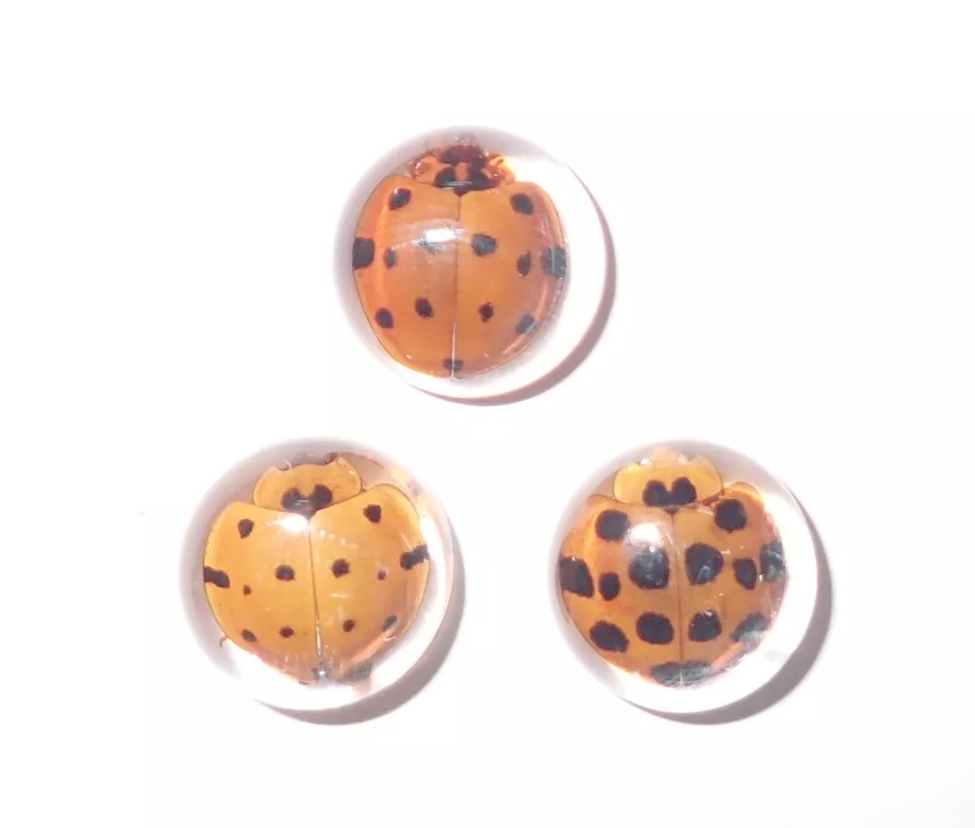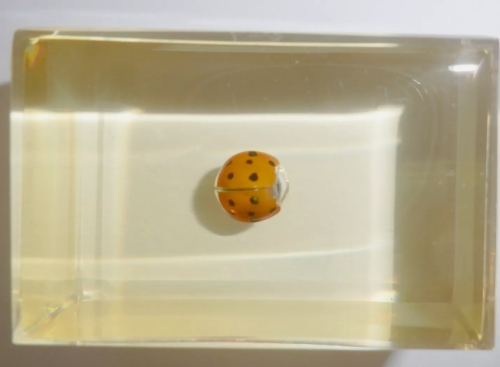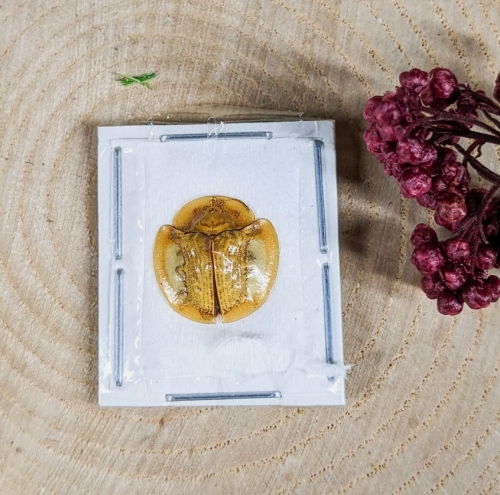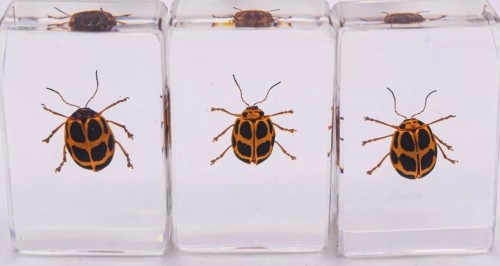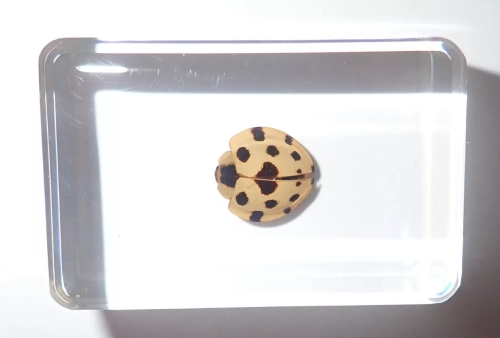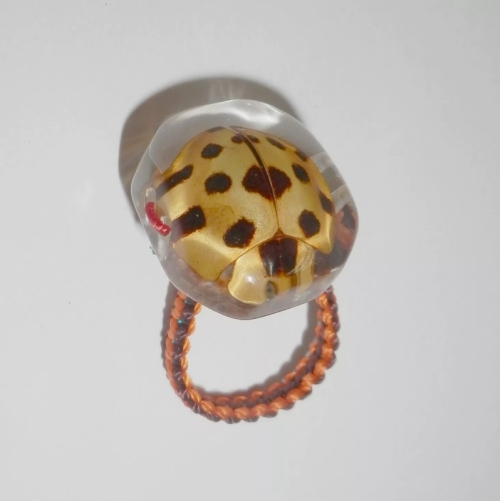Ladybugs, with their bright colors and unique forms, have attracted wide attention and become a popular item in the collection of biological specimens. These small beetles usually appear with red, yellow or black spots, and have a smooth and glossy appearance, which gives a pleasant visual experience.
The life cycle of ladybugs can be divided into four stages: egg, larva, pupa and adult. As predatory insects, they mainly feed on agricultural pests such as aphids and play an important role in regulating the ecological environment. In nature, ladybugs not only help crops resist pests, but also maintain biodiversity through their unique ecological niche.
The selection and preservation of ladybugs are crucial in the taxidermy process. First,healthy,intact and brightly colored individuals should be selected to ensure the ornamental value of the specimen. When handling specimens,it is necessary to carefully remove excess water to prevent rot or discoloration of the insect body. A common way to preserve specimens is to use a special specimen box and place a moisture-proof agent in it to reduce the impact of moisture on the specimen.
The identification of ladybug specimens is also very important. Different species of ladybugs differ in size,number and distribution of spots. By studying these characteristics,we can not only understand their taxonomic status,but also further explore their role in the ecosystem.
Students and researchers often use ladybug specimens for observation and study to gain insight into the ecological habits and biological characteristics of beetles. Specimen display in the field of education not only enhances students' interest,but also promotes the cultivation of environmental protection awareness.
In addition,the ladybird is often regarded as a symbol of good luck in culture, and its image is often used in various artistic creations. From the point of view of taxidermy, ladybugs are not only a natural specimen.

